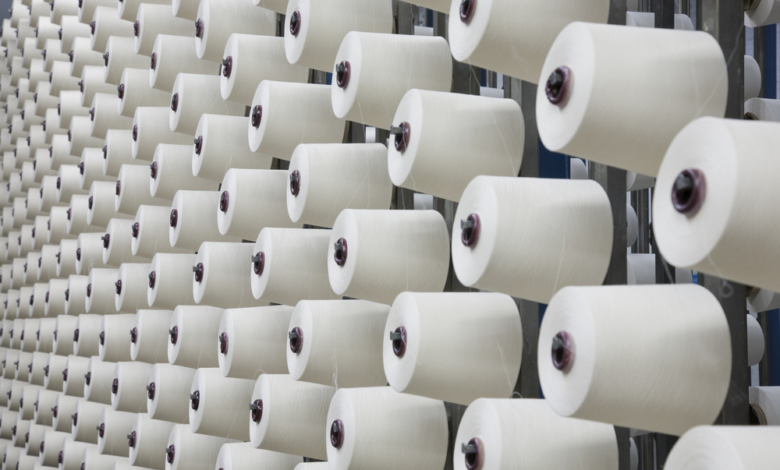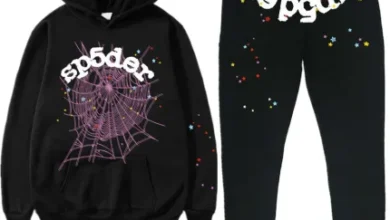What Are the Different Types of Textile Fibers Used in Fabric Production?


A group of students visited a bustling textile mill on a school trip, their eyes wide with wonder at the sight of endless rolls of fabric in every color and pattern imaginable. One student, touching a piece of silky cloth, asked the guide, “What makes all these fabrics feel so different?” The guide, smiling, replied, “There are many types of fibers used to create fabrics, each with its own unique properties.” The students leaned in, ready to learn about the various textile fibers that come together to make the clothes and materials they use every day. Join us as we unravel the different types of textile fibers used in fabric production, guided by insights from top fabric supplier in Pakistan.
What is the Difference Between Fiber and Fabric, and Why Does it Matter?
Understanding the distinction between fiber and fabric is crucial for anyone in the textile industry or anyone passionate about fashion and textiles. While the terms are often used interchangeably, they refer to different stages and aspects of textile production.
Fiber
Fiber is the raw material used to create yarns and fabrics. Fibers can be categorized into three main types: natural, synthetic, and regenerated. Each type has unique properties that affect the texture, strength, and application of the resulting fabric. Natural fibers, such as cotton, wool, and silk, are derived from plants and animals and are known for their breathability and softness. Synthetic fibers, like polyester, nylon, and acrylic, are man-made through chemical processes and offer durability, moisture resistance, and elasticity. Regenerated fibers, such as rayon and lyocell, are made from natural sources but processed to enhance certain qualities, combining the benefits of both natural and synthetic fibers.
Fabric
Fabric is the material produced from fibers and yarns through processes like weaving, knitting, or bonding. The structure and treatment of the fabric determine its final properties and uses in various applications from clothing to industrial textiles. Woven fabrics, characterized by interlacing yarns at right angles, offer strength and stability, making them suitable for garments, home furnishings, and upholstery. Knitted fabrics, created by interlocking loops of yarn, provide elasticity and comfort, ideal for apparel and sportswear. Non-woven fabrics, made by bonding fibers together, are used in products like disposable medical supplies and geotextiles. The finishing treatments, such as dyeing, printing, and coating, further enhance the appearance, texture, and performance of the fabric, tailoring it to specific functional and aesthetic requirements.
What Are Natural Fibers and How Are They Sourced?
Natural fibers come from plants, animals, and minerals. They have been used for thousands of years and continue to be highly valued for their unique properties. Let’s explore their origins.
- Cotton: Sourced from the seed hairs of the cotton plant. Cotton fibers are known for their softness, breathability, and versatility. They are widely used in clothing, home textiles, and industrial applications.
- Wool: Obtained from the fleece of sheep and other animals. Wool is prized for its warmth, elasticity, and moisture-wicking properties. It is commonly used in knitwear, outerwear, and blankets.
- Silk: Produced by silkworms. Silk fibers are renowned for their luxurious texture, strength, and natural sheen. And it is often used in high-end fashion, lingerie, and home décor.
- Linen: Extracted from the flax plant. Linen fibers are strong, absorbent, and cool to the touch. Also its is favored for summer clothing, bedding, and table linens.
How Are Synthetic Fibers Manufactured and What Are Their Benefits?
Synthetic fibers are man-made fibers created through chemical processes. They offer several advantages over natural fibers, including durability and versatility. Here’s a look at some common synthetic fibers.
- Polyester:Made from petroleum-based polymers, polyester is strong, resistant to shrinking and stretching, and quick-drying. Additionally, it is used in a wide range of applications, from apparel to home furnishings.
- Nylon: Also derived from petrochemicals, nylon is known for its exceptional strength, elasticity, and resistance to abrasion. Moreover, it is commonly used in activewear, hosiery, and industrial fabrics.
- Acrylic: Acrylic fibers mimic the properties of wool, providing warmth and softness. Furthermore, they are used in knitwear, blankets, and upholstery fabrics.
- Spandex: Known for its remarkable elasticity, spandex is often blended with other fibers to provide stretch and comfort in garments like sportswear, underwear, and dancewear. Additionally, it enhances the performance and fit of such garments.
What Are Regenerated Fibers and How Are They Produced?
Regenerated fibers are created by chemically transforming natural polymers into fibers. These fibers combine properties of both natural and synthetic fibers. Let’s explore some examples.
- Rayon: Made from cellulose derived from wood pulp, rayon is soft, absorbent, and drapes well. Furthermore, it is used in clothing, home textiles, and medical supplies.
- Lyocell: A type of rayon, Lyocell is produced through an environmentally friendly process that recycles water and chemicals. Moreover, it is known for its strength, softness, and biodegradability, making it popular in sustainable fashion.
- Acetate: Derived from cellulose acetate, Acetate fibers are lightweight, shiny, and drape beautifully. In addition, they are used in linings, dresses, and decorative fabrics.
- Bamboo Fiber: Extracted from bamboo pulp, Bamboo fibers are soft, breathable, and naturally antibacterial. Furthermore, they are used in eco-friendly clothing, towels, and bedding.
How Do Blended Fibers Enhance Fabric Performance?
Blended fibers combine two or more types of fibers to create fabrics with enhanced properties. Moreover, this approach allows manufacturers to leverage the strengths of different fibers. Here’s how blending works.
- Cotton-Polyester Blends: Combining the comfort of cotton with the durability of polyester, therefore, these blends are popular in everyday apparel and home textiles.
- Wool-Acrylic Blends: By blending wool with acrylic, manufacturers create fabrics that are warm, lightweight, and easy to care for. Consequently, these blends are ideal for knitwear and outerwear.
- Nylon-Spandex Blends: These blends offer a perfect balance of strength and stretch, thus making them ideal for activewear, swimwear, and lingerie.
- Silk-Cotton Blends: Blending silk with cotton produces fabrics that are luxurious, breathable, and affordable. Therefore, they are suitable for a range of clothing and home décor items.
What Products Does Avon Commercial Offer to Meet Diverse Fabric Needs?
As a leading fabric and yarn supplier in Pakistan, Avon Commercial provides a wide range of products to meet diverse industry needs. Here are some key offerings:
- Cotton Yarns: High-quality cotton yarns ideal for knitting, weaving, and crocheting, available in various counts and finishes.
- Polyester Yarns: Durable and versatile polyester yarns suitable for apparel, home textiles, and industrial applications.
- Blended Yarns: Custom blends of natural and synthetic fibers tailored to specific performance requirements in different textile products.
- Specialty Yarns: Innovative yarns designed for unique applications, including technical textiles, eco-friendly products, and high-performance fabrics.
- Recycled Yarns: Sustainable yarns made from post-consumer and post-industrial waste, supporting eco-conscious manufacturing practices.
How Do Textile Fibers Impact Fabric Properties and Applications?
The choice of textile fibers significantly influences the properties and applications of the resulting fabric. Let’s examine the impact of different fibers on fabric characteristics.
- Strength and Durability: Synthetic fibers like polyester and nylon provide exceptional strength and durability, thus making them suitable for heavy-duty applications.
- Comfort and Breathability: Natural fibers such as cotton and linen offer excellent comfort and breathability, ideal for warm-weather clothing and bedding.
- Aesthetics and Texture: Fibers like silk and rayon contribute to the luxurious texture and drape of fabrics. Additionally, they enhance their aesthetic appeal.
- Performance Features: Blended and specialty fibers can impart specific performance features, such as moisture-wicking, stretch, and thermal regulation, tailored to the needs of activewear, outdoor gear, and technical textiles.
Wrapping Up:
Understanding the different types of textile fibers is essential for anyone involved in fabric production. Moreover, it is crucial for individuals ranging from designers to manufacturers. Indeed, each type of fiber brings unique characteristics that, in turn, influence the look, feel, and functionality of the final product. By partnering with leading fabric and yarn suppliers in Pakistan, such as Avon Commercial, businesses can access a diverse range of high-quality fibers tailored to their specific needs. This knowledge empowers them to create innovative, durable, and sustainable textile products that meet the demands of today’s market.
Check out more informative blogs.




